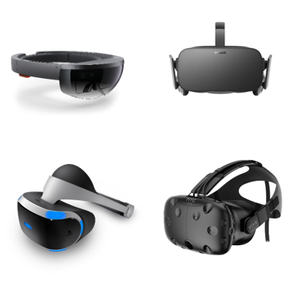2.5 million Australian households to have VR headsets by 2020
Thursday, October 13th, 2016
Virtual reality set to invade Australian lounge rooms as consoles-based VR ignites consumer interest
- 2.5 million Australian households expected to have virtual reality headsets by 2020
SYDNEY, AUSTRALIA — Demand by video gamers is expected to drive a boom in VR headset sales throughout the holiday season, according to a new study from emerging technology analyst firm Telsyte.

The Telsyte Australian VR & AR Market Study 2017 predicts 115,000 VR headset units will be sold in the second half of 2016 with sales rapidly growing to over 500,000 units in 2017. In H2 2016, Telsyte estimates that 46 per cent of unit sales will be console-based VR systems, 46 per cent mobile VR and the remaining 8 per cent PC-based systems.
By 2020, Telsyte estimates over 3.3 million units will have been sold in Australia (of all types) reaching a household penetration of 22.3 per cent or 2.5 million households, as more consumers are drawn in by the immersive attraction of virtual reality.
Telsyte research shows that 75 per cent of Australians over the age of 16 are now aware of VR, up from 49 per cent in October 2015. The backing of multinational brands such as Google, Facebook and Sony has helped lift awareness and created pent-up demand in Australia.
Telsyte predicts Sony’s PlayStation®VR (PS VR) will be the lounge room leader given the large installed base of PlayStation®4 (PS4™) home consoles capable of utilising PlayStation VR. Telsyte estimates that there are in excess of 1 million PS4 consoles in Australian households, making it a mainstream platform for the adoption of VR. Accordingly, Telsyte estimates 65 per cent of VR hardware revenue will be generated by PlayStation VR in H2 2016. This prediction is backed by Telsyte survey findings which indicate that 20 per cent of PS4 users indicate a desire to buy a VR headset.
Mobile VR is expected to also generate strong sales, but current technological limitations (e.g. not having full 3D head tracking) will limit its use and applications, in particular with video games. Telsyte believes mobile VR will remain a gateway for many consumers to more functional systems but will remain an important platform for VR movies, and 360 video applications such as documentaries, eCommerce and education.
Telsyte believes video gaming will be a key driver for the adoption of VR in Australia. 76 per cent of those interested in buying a VR unit indicated they ‘want to purchase a VR device to have an enhanced gaming experience’, while 66 per cent indicated that they were interested in applications other than gaming, including movies, education, sports viewing, events, and eCommerce.
Nearly 1 in 3 regular game buyers (28 per cent) indicated a desire to purchase a VR headset according to a survey conducted by Telsyte in March 2016 for the Interactive Games Entertainment Association (IGEA). Of these, 40 per cent indicated a desire to purchase a VR headset as soon as 2016. Telsyte estimates that there are more than 5 million regular video games buyers in Australia, making for a vibrant pool of potential early adopters across PC, console and mobile VR platforms.
“Entertainment will be the main driver of VR adoption in Australia, however, organisations of all types are excited by the prospects of developing VR applications” Telsyte Managing Director, Foad Fadaghi says.
Telsyte research conducted with CIOs and IT decisions makers in August 2016, indicated that some 60 per cent of Australian and New Zealand organisations had already begun developing or were considering developing VR applications, for either internal and external (customer facing) uses.
Despite the technological developments in VR, there still remains some concerns around the health impacts of prolonged use. One in three Australians surveyed by Telsyte indicated they were “concerned about the health effects of VR” with the main concerns relating to the impact on eyesight (52 per cent) and “not enough knowledge of health effects” (48 per cent).
* In addition to the announced and available products in the market in October 2016, Telsyte predicts there will likely be new market entrants in the VR and AR market in the forecast period, including games console manufactures (other than PlayStation), smart device vendors (e.g. Apple) and other entertainment and visual/display technology brands.
Latest News
- Barb to start reporting TV-set viewing of YouTube channels
- SAT FILM selects multi-DRM from CryptoGuard
- Qvest and ARABSAT to launch OTT streaming platform
- ArabyAds & LG Ad Solutions partner with TVekstra in Turkey
- Freeview NZ satellite TV service to move to Koreasat 6
- Comscore expands YouTube CTV measurement internationally
